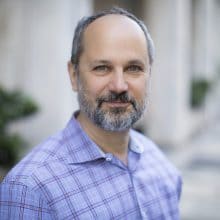![Can Scoliosis Be Corrected With Exercise? [ANSWERED] Image](https://clear-institute.org/wp-content/uploads/2022/10/can-scoliosis-be-corrected-with-exercise.jpg)
There was a time when the place of exercise in scoliosis treatment was questioned, but we have since learned that there’s a big difference between general exercise and general physical therapy, when compared to scoliosis-specific exercise and a individually designed therapy program that’s customized to address the many important condition specific characteristics specific to that patient.
When custom designed scoliosis-specific exercises and scoliosis specific therapies are combined with other forms of proactive treatment, they can help achieve sustainable corrective results by strengthening the spine’s surrounding muscles, increasing spinal flexibility, reducing the scoliosis, and re-training the postural mechanisms to maintain the correction.
Not only is it important to understand the difference between general exercise and scoliosis-specific exercise, as a progressive condition, when exercise is integrated into treatment can also be an important factor.
Before getting to the specifics of scoliosis specific exercises as part of customized scoliosis treatment plan, let’s first discuss some general condition characteristics for a better understanding of treatment efficacy.
Being diagnosed with scoliosis means an unnatural sideways spinal curve, with a rotational component, and a minimum Cobb angle of 10 degrees, has developed.
Cobb angle is a measurement obtained during X-ray that involves drawing intersecting lines from the tops and bottoms of the most-tilted vertebrae (bones of the spine) at the apex of the curve.
A patient’s Cobb angle places their condition on a severity scale of mild, moderate, or severe:
So as you can see, scoliosis ranges greatly in severity, curve pattern, age of diagnosis, etc etc, which is why the very nature of scoliosis necessitates a customized treatment approach; in general, the higher a patient’s Cobb angle and rotational component are, the more likely continued progression, escalating symptoms, and the need for invasive treatment (surgery) in the future may be.
Scoliosis is a progressive condition, which means it has a high probability that it will get worse over time, particularly if left untreated, or not treated proactively.
The progressive nature of scoliosis is the reason it’s important to start treatment as early as possible; where a scoliosis is at the time of diagnosis is not indicative of where it will stay. The younger the age of diagnosis, the more growth is left and the higher the chances of developing a large (severe) curve size.
One thing that is always true: All LARGE scoliosis curves started as small curves.
Even scoliosis diagnosed as mild can easily progress to moderate, severe, or very severe, if proactive treatment isn’t applied at the right time in the condition’s progressive line.
For those on the path of traditional medical (orthopedic) treatment, increasing condition severity means moving closer to crossing the surgical-level threshold and being funneled towards spinal fusion (titanium rods, screws, or tethering) surgery; although all surgical procedures come with their share of risks, scoliosis surgery is costly, invasive, and carries some heavy potential risks and side effects.
In fact, one of the main goals of a proactive conservative treatment approach, also referred to as functional, non surgical, and/or chiropractic centered, is to spare patients the hardships associated with progression, increasing condition severity, and the need for invasive treatment, like spinal fusion, in the future.
The timing of introducing an individually designed scoliosis-specific exercise and therapy care program is particularly important because patients need to be able to perform the exercises as early in their treatment program for them to be most effective.
While everyone benefits from general exercise and general physical therapy that strengthens the body, for those dealing with the challenge of living with a progressive condition like scoliosis, exercise takes on another level of importance. Research shows that scoliosis specific exercises are a very important and successful part of a treatment plan for scoliosis whether mild, moderate, or severe, and whether for scoliosis in a child or an adult.
Related: Exercise & Physical Therapy for Scoliosis
Research shows that a body that’s strong and physically fit is more capable of getting a better response to conservative scoliosis care. But beyond physical fitness lie the benefits of an individually designed scoliosis specific program of exercises to stabilize and reduce the scoliosis.
It should also be clearly stated that scoliosis is incurable, so in the traditional sense of corrected meaning cured, scoliosis can’t be corrected, but in the context of scoliosis, corrected means something different: it means achieving sustainable corrective results.
By corrective results, what we mean is reducing or eliminating any pain the patient may be experiencing, reducing the curvature on a structural level as well as improving the cosmetic appearance of the patient, AND increasing core strength so the spine is optimally supported and stabilized by its surrounding muscles.

Following are some scoliosis-specific exercise programs that have produced impressive results:
When performed correctly, and combined with other forms of proactive treatment, SSEs can not only help strengthen the spine and its surrounding muscles for optimal support, they can also activate specific areas of the brain for enhanced brain-body communication, postural remodeling, and facilitate a more-natural body positioning.
The best exercises for scoliosis will be case-specific, custom-prescribed by a scoliosis treatment provider as part of a condition-specific physical therapy program, and are customized to address important patient/condition variables such as age, condition type, curvature location, coordination and balance, general fitness level, and size of the scoliosis.
While there are no treatment guarantees, SSEs are most effective when scoliosis is mild to moderate and curves are below surgical threshold; this is when scoliosis exercises and therapy has the greatest potential to augment corrective results and control progression, and part of that is due to spinal rigidity .
Spinal Rigidity
While early detection can increase chances of treatment success, this is only the case when a diagnosis is responded to with proactive treatment.
Scoliosis is simpler to treat while a curvature is at its smallest, before progression has occurred over time, increasing spinal rigidity, and before the body has had ample time to adjust to the unnatural spinal curve’s presence.
The more severe a case is, the less effective SSEs are likely to be, and to be clear, exercise on its own, even when scoliosis-specific, won’t be enough to achieve corrective results in more severe cases; SSEs have to be combined with other forms of proactive treatment, like Custom designed 3D corrective bracing, that can also impact the condition on a structural level.
In the more-severe levels of scoliosis, the efficacy of exercise in treatment is limited because as a scoliotic curve progresses, the spine becomes less flexible, making it more rigid and requiring more aggressive treatment like bracing and targeted stretching techniques.
When a patient’s spine is rigid, it can be difficult for them to even perform certain exercises, let alone perform them correctly as prescribed, and this is because they can’t mobilize the area enough; in these types of cases, targeted therapies have to be done, before the regular course of treatment, to first establish a baseline level of spinal flexibility. These therapies are designed to improve mobility in large scoliosis cases.
So now that we understand the potential benefits of scoliosis-specific exercise and how they can help achieve corrective results, what types of exercises are bad for scoliosis?
What Exercises are Bad for Scoliosis?
So while achieving corrective results in scoliosis patients is beyond the scope of general exercise and physical therapy, are there exercises that can actually be bad for scoliosis?
Scoliosis introduces a lot of uneven forces to the body, which is why postural deviation that disrupts the body’s overall symmetry is one of its earliest signs, especially in children and adolescents.

Exercises that are bad for scoliosis vary from case to case and include any sports or activities that involve repeated shocks and/or jarring motions; this is because they put the spine in danger of sustaining an injury and increase compression.
Generally speaking, the most important thing when discussing exercise beyond the scoliosis specific exercises taught by your CLEAR certified chiropractor, is that it is important for the patient to be fit! With only a few limits that apply to some patients, do what you enjoy! Exercise has to be fun, is often social, and my be limited by the patients circumstances….
Exercises that involve EXCESSIVE hyperextending the spine can also have negative effects as unnaturally arching the back can cause the vertebrae to further rotate into the curve and increase progression.
Exercises and activities that involve hyperextending the spine include diving, gymnastics, and certain yoga poses.
Interestingly sports and exercise that involve overusing one side of the body ARE NOT bad for scoliosis despite their working muscles unevenly: The body will not allow more than a 10% difference between the dominant and non dominant side. Tennis for example is fine for MOST people with scoliosis. The issue is not so much the one sided nature of the sport, it is more likely that the strong and explosive twisting will cause issues.
Remember, it’s not just the spine that’s in charge of maintaining its natural curves and alignment, but also its surrounding muscles.
As a CLEAR-certified scoliosis chiropractor, I believe in the value of proactive treatment that strives to preserve as much of the spine’s natural function as possible throughout treatment and beyond.
While no treatment results can be guaranteed, with early detection and proactive treatment, there are fewer limits to what we can achieve, and the best time to start scoliosis treatment is always now.
While no single form of treatment on its own can be enough to correct scoliosis, scoliosis-specific exercise, a customized scoliosis therapy program, chiropractic care, and corrective bracing can complement one another to impact the condition on multiple levels.
When it comes to exercise, general exercise and general physical therapy can be helpful at maintaining overall strength and health, but the complex nature of scoliosis necessitates a customized treatment approach that needs condition-specific exercise and therapy to help increase core strength, spinal flexibility, re-program posture, and reduce a scoliotic curve.
When performed correctly as prescribed and integrated into a proactive and customized scoliosis treatment plan, scoliosis-specific therapies and exercise can help achieve corrective results: reducing scoliosis on a structural level and preventing further progression.

CLEAR provides a unique and innovative way of understanding scoliosis. Sign up to receive facts and information you won’t find anywhere else.
